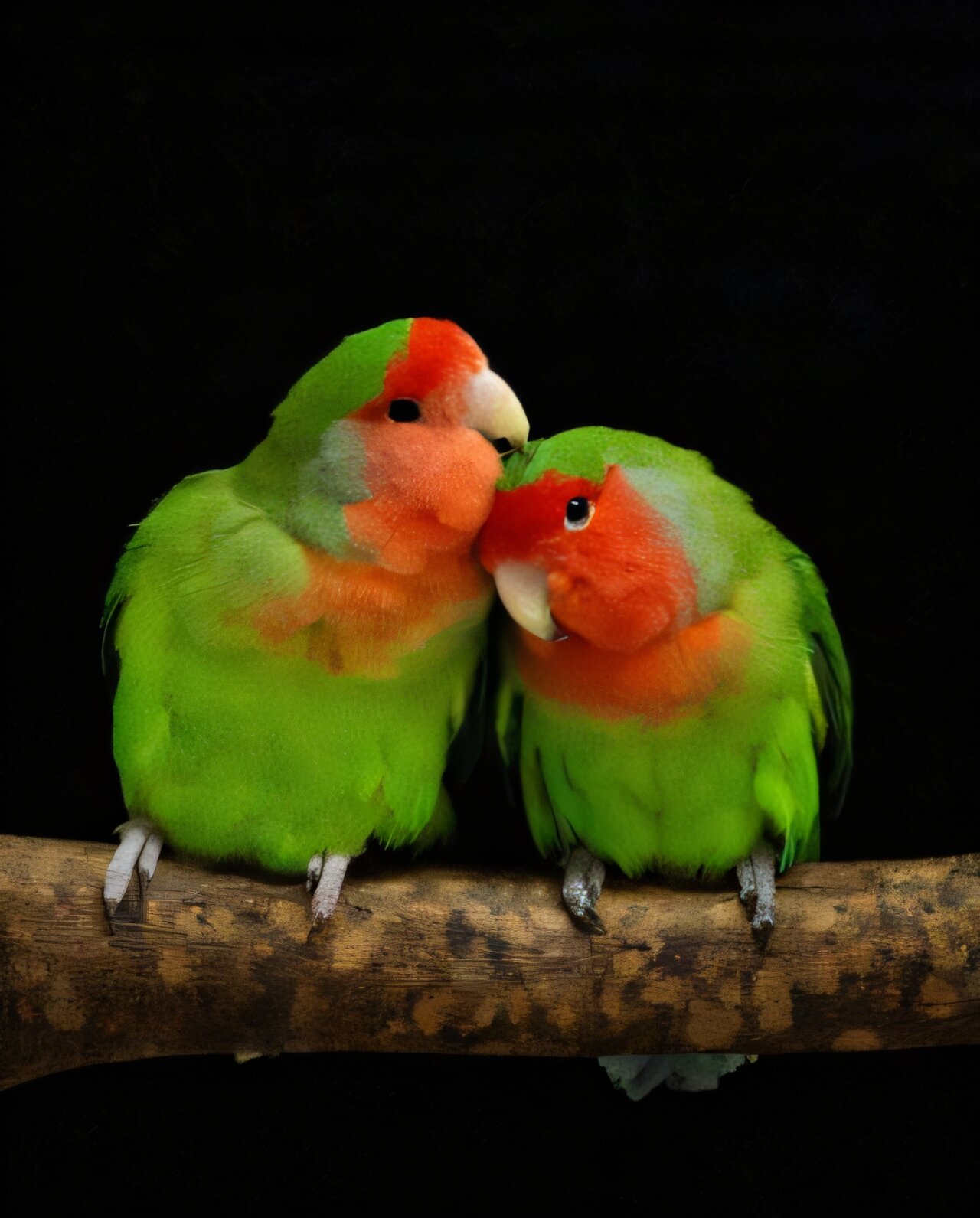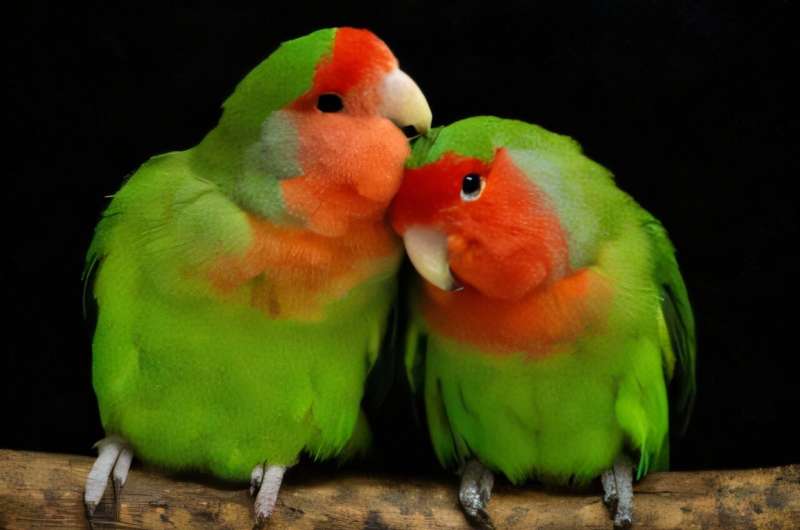

From the Carnival in Rio de Janeiro to the shoulders of pirates: parrots are synonymous with color for people across the world. In a study published in the journal Science, scientists from The University of Hong Kong, together with an international team led by scientists from BIOPOLIS-CIBIO (Portugal) have uncovered for the first time a “switch” in the DNA of parrots that controls their wide gamut of colors.
“Parrots are unique birds in many ways, including how they produce their vibrant color diversity,” begins Professor Simon Yung Wa Sin, co-author from the School of Biological Sciences of The University of Hong Kong (HKU).
“Parrots do their own thing when it comes to color,” adds Dr. Roberto Arbore of BIOPOLIS-CIBIO, and co-first author of the study.
Although other birds also produce yellow and red feathers, parrots evolved unique pigments, called psittacofulvins (from the ancient Greek “psittakós” for parrot, and the Latin “fulvus” for reddish-yellow). “Parrots combine these with other pigments to create vibrant yellows, reds, and greens, making these animals among nature’s most colorful,” he says.
Parrots are common pets in millions of homes worldwide, and they are appreciated for their color and intelligence. But for all their flashiness, it was not well understood how these birds evolved a unique way to create their color palette.
“This is a big mystery for scientists and bird lovers alike,” explains Professor Miguel Carneiro, senior author from BIOPOLIS-CIBIO, who adds, “and it ties up to a key question to all of biology, of how does diversity arise in nature?”
To answer such a fundamental question, the scientists started by demonstrating that, across all major parrot lineages, yellow and red in feathers correspond to two specific pigments that do not occur in other birds.
“Although there were some indications in the literature about the existence of two chemical forms of psittacofulvins, it was initially hard for us to believe what we were seeing in the results—side by side, clear as day—for the first time ever. Only with genetic data it all started to make perfect sense,” says Dr. Jindřich Brejcha from the Faculty of Science at Charles University in Prague, another co-first author.
To dig deeper, the scientists focused on a species with naturally occurring red or yellow forms, a phenomenon that is extremely rare in nature.
“The dusky lory is native to the jungles of New Guinea, but we just had to drive a few miles from our lab in Portugal, since local certified breeders helped us get samples to study the genetics of color in this species,” said Pedro Miguel Araújo of the University of Coimbra, who co-led the research, adding, “The solution to our study was almost next door.”
The scientists found that only one protein controlled the color difference in the lories, a type of aldehyde dehydrogenase (or ALDH), essential “tools” for detoxification in complex organisms—for example, they contribute to elimination of alcohol in the liver of humans.
Dr. Soraia Barbosa, also co-first author from BIOPOLIS-CIBIO, explains, “Parrot feathers found a way to ‘borrow’ this protein, using it to transform red to yellow psittacofulvins.” According to the scientist, “This functions like a dial, in which higher activity of the protein translates to less intense red color.”
To understand the general role of this protein in controlling the plumage color in other parrot species, scientists studied another parrot, the rosy-faced lovebirds, a species that displays both green (i.e., yellow psittacofulvin-containing) and red plumage patches.
“The rosy-faced lovebird is a familiar parrot that provides an excellent system to study the genes determining the color difference between red and yellow psittacofulvin-containing plumage patches,” said Simon Yung Wa Sin, who led the team from the School of Biological Sciences at HKU, including Dr. Alison Cloutier and Research Assistant Emily Shui Kei Poon.
They found that the same aldehyde dehydrogenase gene in the lovebirds is expressed at high levels in yellow psittacofulvin-containing feathers, but not in red feathers. “When this gene expresses at a high level, the psittacofulvins turn from red to yellow,” explains Yung Wa Sin.
To demonstrate this simple dial mechanism, scientists turned to an even more familiar parrot, the budgerigar and, in a world-first, explored how individual cells turn different genes on or off throughout feather growth, pinpointing a small number of cells that use this detox protein for controlling pigment conversion.
The final validation came when the scientists genetically engineered yeasts with the parrot color gene, “Incredibly, our modified yeast produced parrot colors, demonstrating that this gene is sufficient to explain how parrots control the amount of yellow and red in their feathers,” Professor Joseph C. Corbo, Professor at the Washington University in St. Louis (U.S.) says.
This study showcases how cutting-edge developments in biotechnology are increasingly used to unravel nature’s mysteries. “We now understand how these stunning colors can evolve in wild animals through a simple dial-like “molecular switch” that “borrows” a detoxifying protein to serve a new function, Carneiro concludes.
These findings help scientists paint a new colorful picture of evolution as a process in which complexity can be achieved through simple innovations.
More information:
Roberto Arbore et al, A molecular mechanism for bright color variation in parrots, Science (2024). DOI: 10.1126/science.adp7710
Provided by
The University of Hong Kong
Citation:
Biologists reveal the genetic ‘switch’ behind parrot color diversity (2024, November 5)
retrieved 5 November 2024
from https://phys.org/news/2024-11-biologists-reveal-genetic-parrot-diversity.html
This document is subject to copyright. Apart from any fair dealing for the purpose of private study or research, no
part may be reproduced without the written permission. The content is provided for information purposes only.